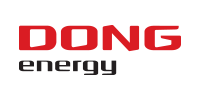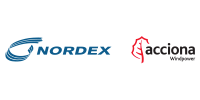17:00 - 18:30 Making wind fit for the power system of the future
Integrating wind power into the electricity market


Room: Hall F
In 2015 wind power accounted for 44% of all new power installations across Europe – more than any other technology. Wind power covers 12% of Europe’s electricity demand. In 2030, wind power could serve a quarter of the EU’s electricity needs and be the backbone of Europe’s energy system. This has and will have a major impact on how future energy systems operate. The wind power industry plays a fundamental role in this transition. This session will look at the challenges and opportunities this presents and give examples on how wind can support the energy transition.
You attended this session?
Learning objectives
- Understand how large offshore wind power plants can contribute to overall system stability and take over ancillary services from conventional thermal power plants;
- Learn how to safely estimate the capacity reserve that an offshore power plant can offer in the ancillary service market;
- Discover potential disruptive technical solutions and emerging business models which may facilitate a proliferation of variable renewables;
- Understand the implementation of grid code compliance certification to address the new harmonised grid codes across Europe.


Presenter

Co-authors:
Tobias Gehlhaar (1) F Chakradhar Byreddy (2)
(1) DNV GL - Energy, Hamburg, Germany (2) DNV GL, Asia Pacific, India
Presenter's biography
Biographies are supplied directly by presenters at WindEurope Summit 2016 and are published here uneditedTobias Gehlhaar was born in 1968 in Germany. He studied electrical power engineering. His employment experience include the German power electronics consultancy ISLE, the wind turbine manufacturer Nordex, the machine measurement consultancy StatusPro, and, currently the technical advisor company DNV GL in the field of Renewables Certification. His special fields of interest include smart grid and international Grid Code Compliance of different renewable power generators and plants. He is working on international standard harmonization within German FGW, the IEC working group on 61400-27 and in the grid code working group of European EWEA. His current position at DNV GL is Principal Engineer.
Abstract
EU grid code compliance
Introduction
Harmonization of grid codes has improved with the EU Commission's Regulation on Requirements for Generators (RfG).
Modern plants are designed to support the electrical power grid (in the following called system or network) with ancillary services during normal operation as well as during electrical faults in the system.
This paper deals with GCC services intended to provide help regarding the question, what requirements are to be taken from which grid code, how to provide evidence of compliance by testing and measuring technical capabilities of units and plants and how to evaluate the results and to state and keep them compliant with certain requirements in different levels.
Approach
The paper shows a structural way how to proof compliance on the level of a type of a wind turbine. Especially the approach will contain in a first step the verification level of harmonized requirements within EU (EU Type Certificate) and in a second step the level of one country as an example (country specific add-on). Possible synergies concerning equipment certificates for important components and other ways of independent verification will be shown.
Main body of abstract
Manufacturers of generating units can have proof of evidence independent from any grid code, with a scope defined according to the GCC-features from the Appendix of the new GCC-Standard issued by DNV GL in March 2016.
System operators will benefit when they want to see their individual requirements met. This is possible when requiring the strongest GCC class I for a project certificate (PCI).
Equipment manufacturers benefit by asking for an Equipment Certificate in GCC class II, covering many countries and many grid codes, taking into account a standardized but limited scope. This scope is the intersecting area between the grid codes applied and the service specification itself.
This means a huge variety in possible services.
The number of parties having benefits from these new GCC services is quite big:
1. Manufacturers of
• Power generating units (Wind Turbines, Solar PV inverters, Combined Heat and Power)
• Power generating plants (Planners, developers)
• Power generating facilities and other electric power grids in general
• All kind of components
2. Operators
• Power generating plant operator
• Electrical system operators
• Virtual power plant operators
3. EPC-companies (Engineering Procurement Construction)
4. Authorities
5. Financing sector
• Banks
• Investors
• Insurance companies
6. Law firms
7. Supporting engineering companies (including software houses)
8. Standardization Organizations
9. Testing laboratories
It works by keeping things simple. The new rule for this kind of flexible grid code compliance (GCC) is the Service Specification DNVGL-SE-0124 which will be presented in the paper briefly.
When starting it needs first to be found out, which definitions shall be used within the verification and certification. This can also mean investigating possibilities of site specific relaxations or cost benefit analysis for the system operator.
Verification often is unclear. This is not the case for the new GCC service specification. All verification steps are well defined and helping the industry to proof compliance with grid codes.
Conclusion
One type certificate for all European requirements is feasible. Add-ons for different countries are available. For some countries, special requirements will be handled by GCC class I, leading to full acceptance by the system operators in question.
Learning objectives
The paper will explain how the different verification principles within Europe will work together, how the harmonization of EU grid code can be used in practice.
Tobias Gehlhaar was born in 1968 in Germany. He studied electrical power engineering. His employment experience include the German power electronics consultancy ISLE, the wind turbine manufacturer Nordex, the machine measurement consultancy StatusPro, and, currently the technical advisor company DNV GL in the field of Renewables Certification. His special fields of interest include smart grid and international Grid Code Compliance of different renewable power generators and plants. He is working on international standard harmonization within German FGW, the IEC working group on 61400-27 and in the grid code working group of European EWEA. His current position at DNV GL is Principal Engineer.





Follow EWEA on: